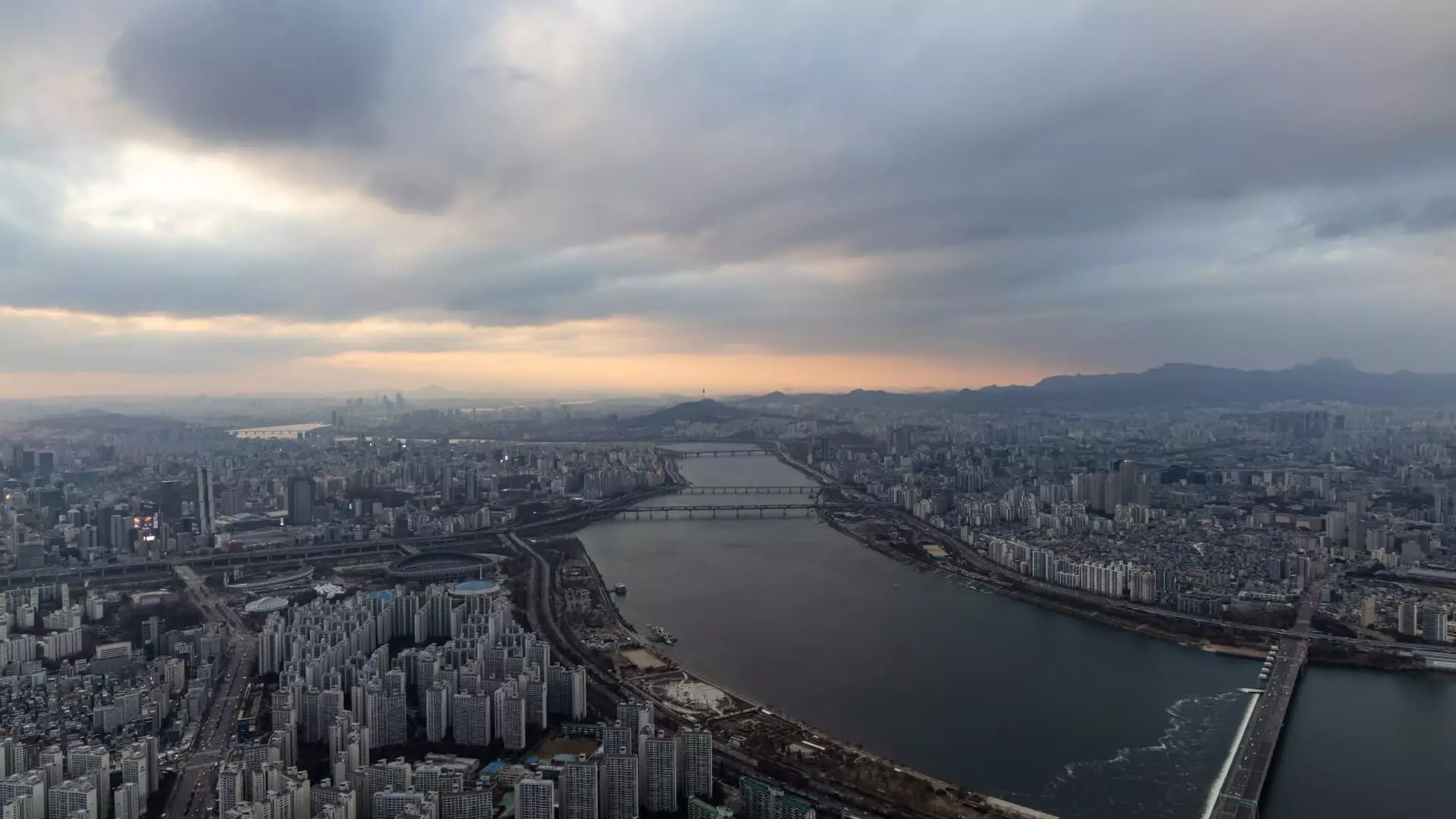Recent reports of South Korea’s GDP contracting by 0.1% year on year in the first quarter have sent ripples of concern through an already volatile economic landscape. This is not just a number on a spreadsheet; it is a stark reminder of the challenges that the nation faces. For the first time since the last quarter of 2020, the economy has experienced a downturn, contrasting sharply with the anticipated 0.1% growth predicted by analysts. The 1.2% rise from the previous quarter now feels like a distant memory, highlighting the fragility of economic forecasts in light of current realities.
The Bank of Korea has pointed to a 12.4% dive in the construction sector as a primary culprit for this contraction. Such a drop in a cornerstone industry raises alarm bells, suggesting deeper issues within domestic demand and an overall lack of confidence among investors and consumers alike. The implications are profound: a contraction in construction not only affects jobs but also signals potential delays in critical infrastructure projects that could further inhibit economic momentum.
The Ripple Effects of Political Uncertainty
The backdrop of this economic decline is painted with a distressing brush of political instability. The ongoing saga of impeachment trials surrounding former President Yoon Suk Yeol and Prime Minister Han Duck-soo has overshadowed any sense of optimism. Political paralysis tends to breed economic inertia, and South Korea is no exception. With the Constitutional Court reinstating Han and ousting Yoon just ahead of crucial elections on June 3, the air is thick with uncertainty. Each political twist has ramifications for both consumer and investor sentiment, all of which have considerable weight in a globally interconnected economy.
In an era where even minor shifts can have significant outcomes, the prevailing anxiety is palpable. Stakeholders are understandably hesitant to commit to long-term investments amid such unpredictability, which in turn hampers growth across multiple sectors. This illustrates the interdependence of politics and economics—a phenomenon that can amplify challenges in an already constrained economy.
Global Trade Challenges and Domestic Strain
South Korea’s export-heavy economy is feeling the pinch of global trade tensions. Although U.S. President Donald Trump’s temporary suspension of reciprocal tariffs may seem like a reprieve, the reality is that South Korean manufacturers still grapple with a hefty 25% tariff on steel and automobiles—two of their most significant exports. These tariffs are not just numbers; they represent barriers that stifle trade and restrict growth potential.
With Hyundai and Kia striving to solidify their positions in the U.S. auto market, any prolonged tariff imposition could undermine their competitive edge. Despite speculation that a new government could reshape trade negotiations, anxiety lingers about how domestic political dynamics may influence diplomatic effectiveness. The outcome is uncertain, but one thing remains clear: South Korea cannot afford to ignore the pressing need for coherent, strategic economic policies and effective trade negotiations.
Monetary Policy in Response to Stagnation
In response to the stagnating growth, the Bank of Korea has held its interest rates at 2.75% in a bid to stabilize the economic outlook. However, analysts, including those from ANZ, suggest that the current economic climate may necessitate aggressive monetary intervention. Anticipating more rate cuts in the coming months, there is a sense that the central bank is caught in a dilemma between mitigating economic lethargy and managing inflationary pressures.
With expectations of reaching fiscal stimulus exceeding 1% of GDP in 2025, it is imperative for policymakers to ensure that these measures have tangible outcomes. Simply lowering interest rates without accompanying structural reforms is akin to pouring water into a bucket with holes—it is unlikely to yield sustainable economic recovery.
A Call for Comprehensive Solutions
As South Korea navigates these turbulent waters, a holistic approach is essential. The intersection of politics and economics must be considered if the nation wishes to rebound. The upcoming elections present an opportunity for rejuvenation, but they also bring risks; the new government could either lay the groundwork for a thriving economy or extend the current cycle of stagnation. Policymakers have a duty to champion economic strategies that foster growth, attract investment, and bolster consumer confidence.
In these uncertain times, the resilience of both the government and the populace will be tested. Navigating this challenging landscape requires not only immediate remedial measures but also a commitment to long-term, sustainable economic strategies that recognize the complex interplay between internal policies and external relations.

